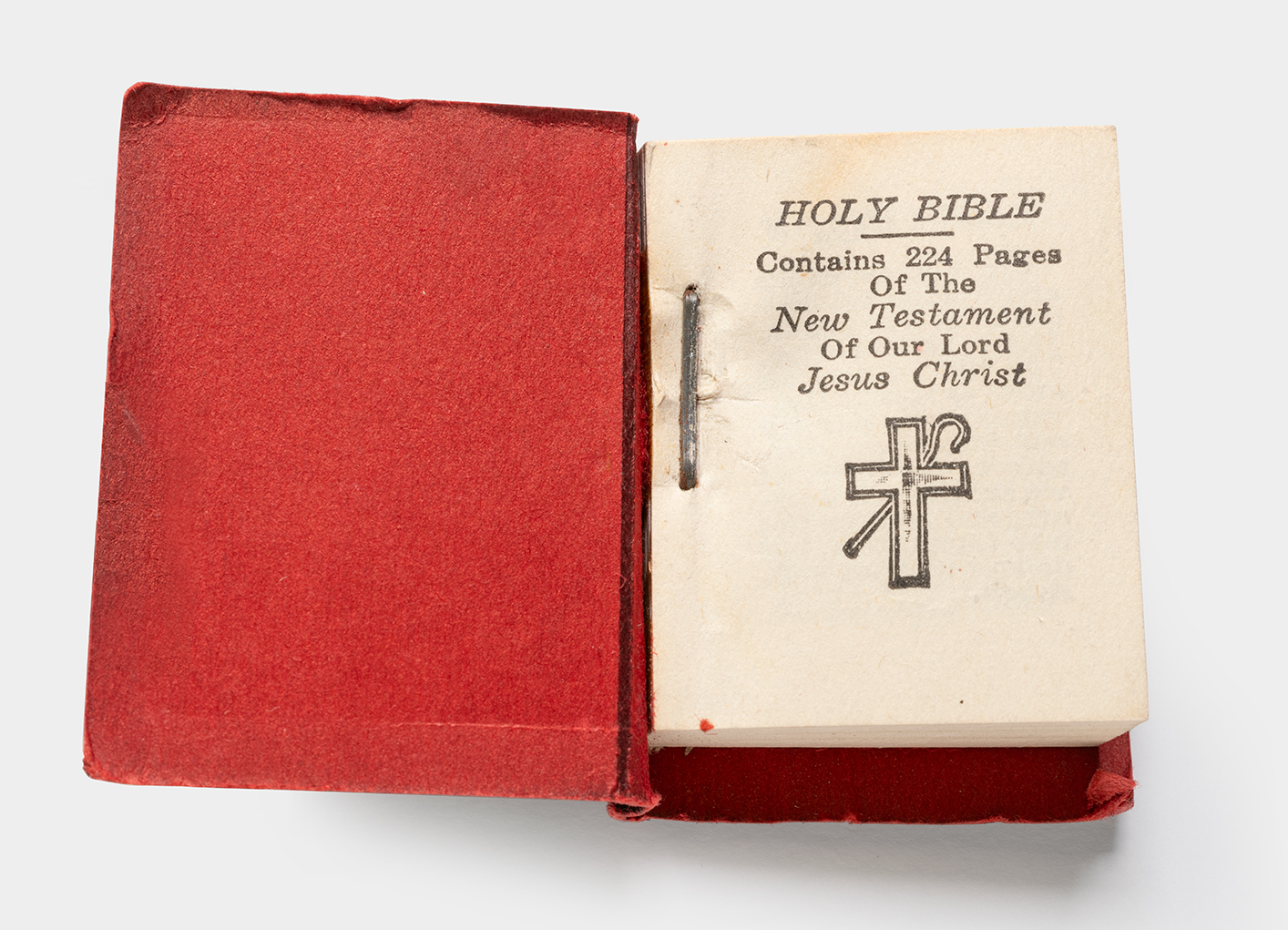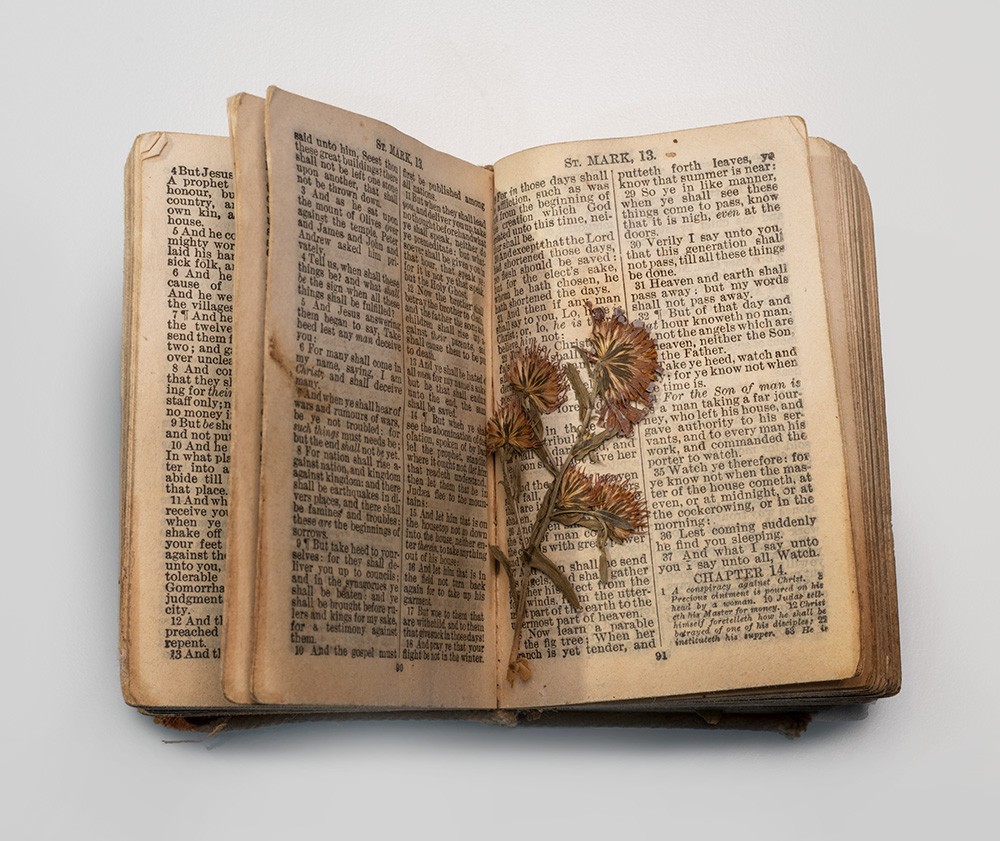Bibles
“I have always been fond of the Bible. I certainly will never go without one after this.”
—Private William R. Wilson, after the New Testament he carried in his breast pocket deflected a bullet from a German sniper
For most of history, the size of Bibles meant few people regularly carried them. By 1914, advanced print techniques allowed for smaller, more inexpensive books and clothing manufacturers designed pockets large enough to carry small books. These innovations changed how people used the Bible during World War I. Kept close, Bibles became personal objects, storing letters from loved ones, holding notes in the margins, and bringing comfort. For many, Bibles were central to their wartime experience.
Miniature Bible

United States
c. 1917-1918
Object ID: 1995.41.19
National WWI Museum and Memorial
For many soldiers, pocket Bibles were lucky. A correspondent of The Manchester Guardian reported in May 1918 that pocket New Testaments were in huge demand by soldiers who had no intention of reading them. Servicemen wanted the books as protective objects, and the New Testament was considered the luckiest -- soldiers did not think penny pocket Gospels or other biblical excerpts were as powerful. This miniature Bible is almost impossible to read without magnification; the small size reflects its primary use as an object of comfort and protection.
New Testament


United States
1918
Object ID: 2015.153.13
National WWI Museum and Memorial
Private Charley Eric Walther carried this pocket-sized New Testament for the entirety of his service in the war. Among its pages lie doodles, picked and pressed wildflowers from the battlefields of France, and a treasured picture of his sister, Pearl.
Handwritten at the back of the New Testament is this message from Private Walther's father:
“Private Charles E. Walther
Killed in action Oct. 1, 1918 in the Argonne France while fighting for the Stars and Stripes.
May this Testament be kept sacred through the future generations is the wish of his father.
He wrote us from the battle front that war would not brutalize him, that he could not resist plucking the beautiful flowers, and these in this book are as he placed them. Some were plucked he said when the bullets were whizzing past him.
He was not afraid of death.
He was twice wounded before he received his mortal wounds.
He was found on the battle field with machine gun bullets through the upper chest, and he died with this precious book in his left hand.”
Photograph of Pearl Walther with dried flowers


United States
1918
Object ID: 2015.153.4
National WWI Museum and Memorial
Pearl Walther gave her brother, Charley Eric Walther, the above New Testament on Christmas Eve 1917 as he prepared for war. Her handwritten inscription in the interior reads, “My sweetheart Brother, Keep this little book with you as a symbol of my love and prayers for you. Love to you dear, Pearl. Dec. 24 - 1917.” With the volume she also gave her love, shared faith and hope for his return. Charley Eric Walther kept this photograph of his sister carefully tucked between the pages of the New Testament.
